Is your cat more of a snoozer than a sprinter? Are their days spent lounging rather than leaping? In our latest article, we're sharing 7 proven strategies to inspire your cat to be more active.
After all, an active cat is a healthier, happier one. You'll learn why keeping your cat active matters, what factors can limit their activity, and, most importantly, ways to stimulate their curiosity and motion.
So, if you're ready to shake up your cat's daily routine and inject some fun, this article is a must-read. Let's turn your couch potato cat into an energetic explorer!
Why should you encourage your cat to become more active?
Many of our cats live their entire lives strictly indoors. We do that to keep them safe from predators, disease, and accidents, but at the same time, we put them at a higher risk of developing a sedentary lifestyle.
If Kitty seems to be the feline equivalent of a couch potato that's not a good thing. Sure, cats spend 14-16 hours a day asleep, but in between they should be walking around, climbing, and jumping.
Being fit is good for your cat for the same reasons it's good for you. Simply put, physical activity promotes good health and keeps the body younger. It's the best and most natural way to fight weight gain, which in turn increases your cat's risk for diabetes and other chronic diseases.
Adopting a more active lifestyle is beneficial for your cat's mental well-being as well. Exercise has the same benefits for cats as it does for humans," says award-winning veterinarian and feline-only practitioner Dr. Letrisa Miller.
"It improves mental health, as can be seen by cats having more interest in playing and being more interested in their environment," she adds. In fact, Dr. Miller says that at least one study has shown that mental stimulation such as food puzzles and toys helps to prevent dementia in cats.
Moderation in all things - including physical activity
Healthy young cats and kittens can be extremely active. In between eating and sleeping, they are often running about, jumping, and playing with everything that moves (and some things that don't).
A healthy young cat's high levels of energy are well matched with a young body. Strong bones and muscles, elastic ligaments, and a robust heart aptly support Kitty's seemingly uncontrolled outbursts of activity.
However, not all of our cats are young or healthy. If you want to encourage your cat to exercise you have to be extra careful if he or she belongs to one of the following groups:
Cats who suffer from chronic diseases
Some medical conditions may inherently limit your cat's ability to exercise. For example, a cat with arthritis will have difficulty jumping or climbing on cat furniture. A heart condition or respiratory problems may mean your cat will tire out faster during playtime. In some cases, encouraging the cat to exert beyond his or her limits could be dangerous.
If your cat suffers from a chronic health problem, talk to your veterinarian before trying to increase his or her level of physical activity. In many cases, exercise could be beneficial as long as it's done in moderation. Your vet is the one who can help you assess if and how much Kitty should be encouraged to exercise.
Keep in mind that some conditions can go undiagnosed for years. In fact, a decrease in levels of activity can in itself be a symptom of a disease. Dr. Miller told us that many of the obese cats she sees do in fact have "an underlying illness such as lower respiratory disease (chronic sub-clinical bronchitis) that causes decreased lung capacity and exercise intolerance or they have musculoskeletal pain from injury."
Dr. Miller added that "those patients are easy to help, and with the treatment of the illness, usually return to a higher exercise level and stop eating out of boredom/frustration."
Senior cats
Older cats have older bodies. Just like with humans, senior cats are more prone to injuries due to a sudden increase in levels of physical activity. They are also more likely to suffer from undiagnosed medical conditions.
Consult with your veterinarian about encouraging Kitty to move around more and discuss any potential background health problems. In a healthy older cat, exercise is certainly a good thing, but you may have to take things more slowly and gradually increase interactive playtime or other forms of activity.
Obese cats
Obesity in cats is a medical problem. Naturally, exercise is an important tool in helping Kitty lose weight, however, if your cat is obese you need to discuss all aspects of weight loss with your veterinarian, including if and how to increase levels of physical activity.
A gradual change is key here as well. The cat's body needs time to gradually strengthen muscles, joints, and ligaments so they can handle the heavier load during exercise time.
Keep in mind that an overweight or obese cat may in fact have an underlying chronic health issue, either leading to the weight gain or caused by it. Dr. Miller says that "Diseases that are definitely linked to weight gain and obesity are primarily diabetes (Type II) and arthritis.
Most inflammatory disorders are also made worse by obesity because fat makes inflammatory compounds." This means you need to be on the alert and have Kitty checked prior to making changes.
Overall, if you feel your cat isn't active enough, you probably need to talk to your veterinarian to rule out underlying problems and custom-tailor a plan best suited to your cat's needs. In Dr. Miller's words:
"It is very important that a veterinarian helps with developing an exercise program that works up to a good fitness level for a cat in order to avoid discouraging the cat and person as well as possible serious injuries like cruciate ligament tears.
Veterinarians and staff can be extremely helpful in developing an exercise plan because they have an understanding of what a cat's physical limitations are and what type of exercise is right for an individual."
SIGN UP FOR THECATSITE'S EMAIL UPDATES >
Once you get the "all-clear" message from the vet, here are seven ways in which you can actually encourage a cat to be more active.
1. Add cat furniture and shelves
Cats have evolved to prowl their territories, so they need space in which to move around. Think your home may be too small for Kitty to patrol? Think again. The good news is that most cats thrive on vertical space, so think like a cat and create climbing and walking routes that go up and down, as well as horizontally.
Cat furniture and cat shelves can encourage Kitty to jump, climb and walk. You don't need a whole lot of floor space to create a mini-gym for your cats. For more ideas, check out this article:
How to make your home BIGGER (at least for your cats)
2. Offer a selection of cat toys and rotate them
Cat toys can provide both mental and physical stimulation as Kitty rolls around clutching a stuffed mouse or spends time batting it around. Some cats are more attracted to catnip toys, so give those a try if you still haven't.
The problem with toys is that they may get boring after a while. Consider this from your cat's point of view: Pretending to kill the stuffed mouse was fun but now it's "dead" and not nearly as fetching.
The solution? Rotate your cat's toys. Keep a good collection of different types of toys stashed away, taking out 2-3 different toys every day.
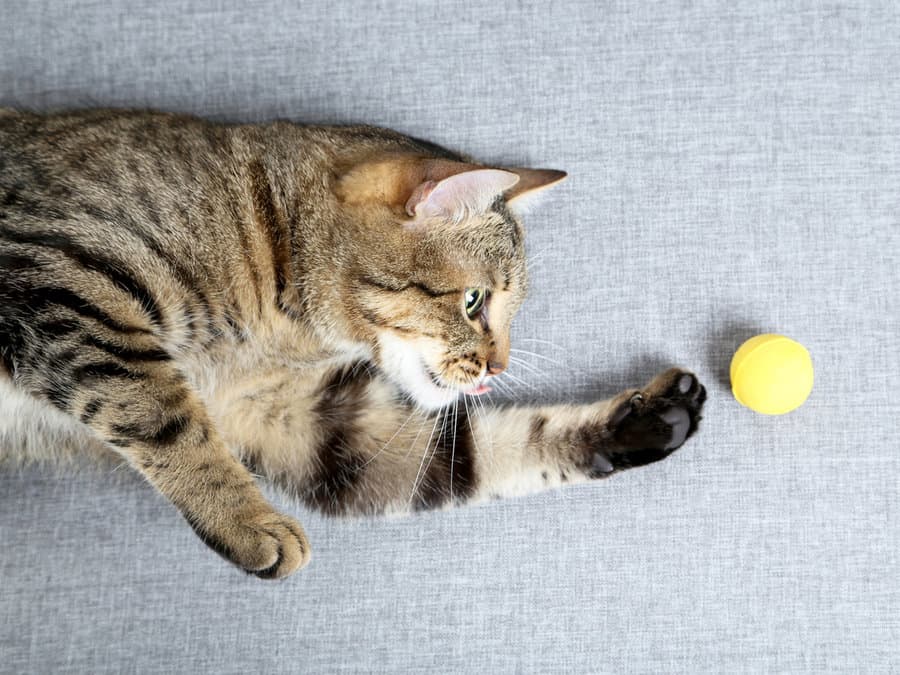
3. Interactive playtime
For many cats, regular toys are simply too passive. Playtime should be a simulation of hunting, so for a toy to be really interesting it needs to move around of its own accord just like live prey would. Automated toys are a good choice for some cats (just remember to rotate them so your cat doesn't get too bored).
The best kind of interactive playtime is with you. You can operate a rod-like toy such as Da Bird to create the best possible hunting simulation. Not sure how to go about doing that? We have you covered with a guide that will turn you into the best mouse impersonator ever -
Playing with Your Cat: 10 Things You Need To Know
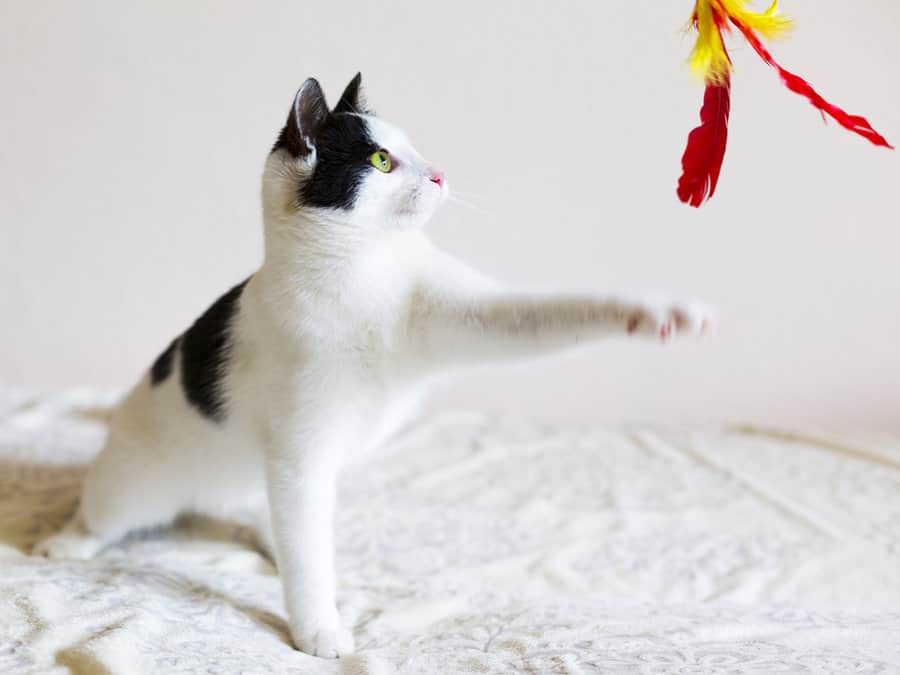
4. Create a safe cat enclosure
Spending time in a natural setting offers both mental stimulation and triggers for activity. Tree branches moving in the wind, the changing patterns of clouds, and the odd butterfly provide the perfect environment for Kitty to move around in.
A large enclosure or a cat-proof fenced yard can help increase your cat's level of activity by encouraging him or her to explore and move about. If you live in an apartment and can't have an enclosure, consider placing shelves next to your windows and securing the opening with a cat-proof net that will let the sounds and smells of the great outdoors into your home.
More about cat enclosures and how to build one -
Cat Enclosures
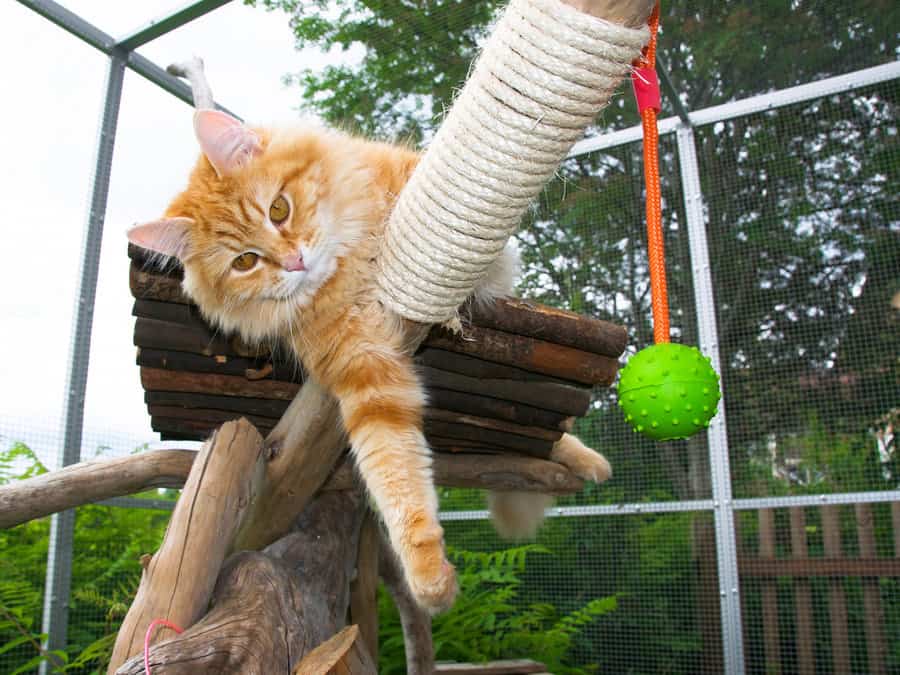
5. Consider taking your cat on walks
It may sound odd to the uninitiated, but many cats enjoy going out on walks with their owners. Walking a cat is nothing like walking a dog. Cats don't "heel" or follow you on command.
This is more about allowing Kitty to explore the great outdoors while in a secure harness and attached to a leash. If it works for your kitty, it can be a fantastic way for him or her to get some exercise.
This is a habit that can take a while to form, so make sure you follow the steps described in our guide -
Harness And Leash Training For Cats
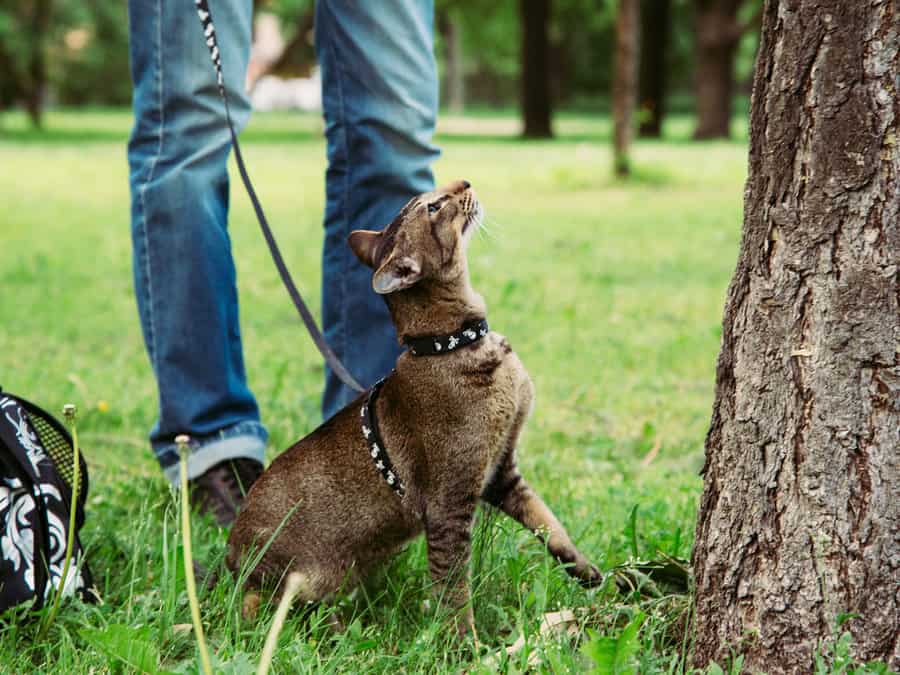
6. Puzzle feeders
Cats are designed to hunt for their food, and you can let them enjoy that even when they're eating kibble or treats and not actual live prey. Using a ball that's also a food dispenser will get Kitty to work for that meal by batting the ball around.
Something like this Petsafe SlimCat Interactive Toy and Food Dispenser is a great form of environmental enrichment providing your cat with both mental and physical stimulation.
7. Get another cat
Obviously, there's more to adopting a second cat than simply encouraging your resident cat to become more active. You need to be prepared to bring another cat into your life and give him or her a forever home.
You should also make sure that an additional feline will indeed have a positive influence on your cat, taking into account a long and gradual introduction. That said, as an additional consideration, a successful match could help your resident cat fight boredom and become more active too.
Just please make sure you read this article first -
Your Second Cat: How To Choose The Best Friend For Kitty

Just do it!
There's a lot you can do to help your cat become more active! Introduce these changes to your cat's routine gradually and you'll end up with a healthier and happier cat.
SIGN UP FOR THECATSITE'S EMAIL UPDATES >
Already applying these techniques? Have your own tips to share? Tell us all about that by adding a comment! Got questions about how to make your cat more active? Please post your question in a new thread in the Cat Behavior forum.
You might also like: How Does Catnip Affect Cats?
Note: We may get commissions for purchases made through links on this page.




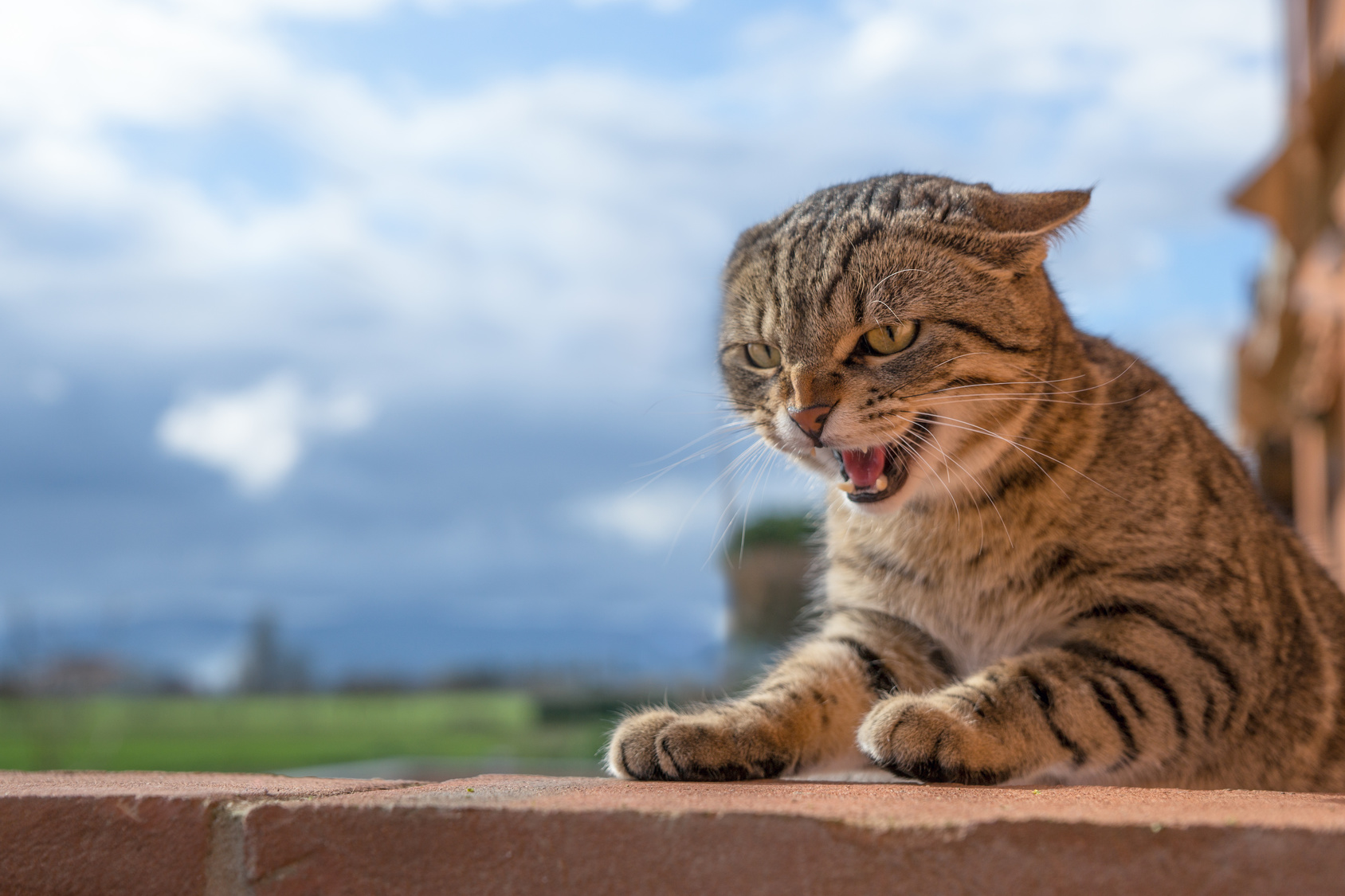
6 comments on “7 Proven Ways To Get Your Cat To Be More Active”